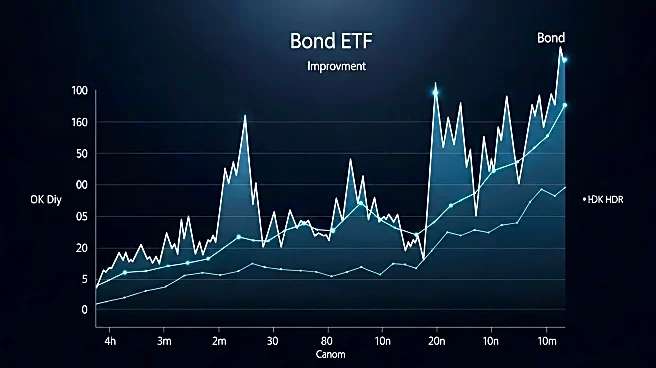What's Happening?
The iShares 20+ Year Treasury Bond ETF (TLT) has demonstrated improved performance as market volatility increases. According to technical analysis, TLT has shown promising intermediate-term developments, including breaking above its 40-week moving average in September and a positive weekly MACD. The ETF's yield stands at 4.14%, and its ratio to the S&P 500 Index has improved due to a counter-trend 'buy' signal from the DeMARK Indicators. Historical comparisons to previous periods of improved relative performance suggest that bonds may outperform stocks in the short term, although this is viewed as counter-trend due to a declining 40-week moving average. The ETF's daily MACD buy signal and rising daily stochastic oscillator indicate potential for a minor breakout above the September peak near $90.50, targeting secondary resistance at the February peak near $92.50.
Why It's Important?
The improved performance of the iShares 20+ Year Treasury Bond ETF amid market volatility highlights the role of bonds as a buffer in investment portfolios. As equity markets experience fluctuations, traditional safe haven assets like bonds can provide stability and attractive yields. This development is significant for investors seeking to mitigate risk and diversify their portfolios. The potential for bonds to outperform stocks in the short term may influence investment strategies, particularly for those prioritizing income and stability over growth. The technical indicators suggest a favorable environment for bond investments, which could impact decisions in the financial sector and among individual investors.
What's Next?
Should the iShares 20+ Year Treasury Bond ETF break above the September peak, it would signal a short-term bullish development, potentially leading to increased investor interest and further price gains. Investors and financial analysts will likely monitor the ETF's performance closely, considering the technical signals and market conditions. The broader trend remains neutral below long-term trendline resistance, suggesting that while short-term gains are possible, long-term performance may require additional catalysts. Stakeholders in the financial industry may adjust their strategies based on these developments, with potential implications for bond market dynamics and investment flows.
Beyond the Headlines
The improved performance of the bond ETF amid volatility may reflect broader economic uncertainties, including trade tensions and geopolitical factors influencing market sentiment. The reliance on technical analysis underscores the importance of data-driven decision-making in financial markets. As investors seek stability, the role of bonds as a safe haven asset may gain prominence, potentially affecting asset allocation strategies and influencing market trends. The interplay between bond and equity markets could have long-term implications for investment strategies and economic forecasts.











